Having a recoiling rifle for your training gun could make you a much better shot
 credit: Archant
credit: Archant
Today’s super-high-tech airguns are capable of incredible accuracy even at long range, but they have one very serious weakness – the wobbly bag of meat and bones holding them. Our guns have attained a level of performance that only elite shooters in perfect conditions can fully utilise and as for the rest of us, well to be honest, we’re letting the guns down! The solution is to practise and train ourselves to become better shots. I can sense a collective groan as you all think ‘BORING’, but I have some good news - training doesn’t have to be dull! In fact, I insist that you keep it interesting, for one good reason; if you get bored you’ll stop. If you’re having fun you won’t notice that you are, indeed training, and getting better and better.
Pre-charged pneumatic (PCP) rifles are very forgiving of our sloppy technique, allowing bad habits to grow and continue unnoticed, so our ideal training gun should recoil. It should also have a basic trigger that requires correct technique to overcome. Match-quality triggers can be snatched as your wobbly sight picture momentarily crosses the target. A basic trigger simply won’t tolerate that poor behaviour.
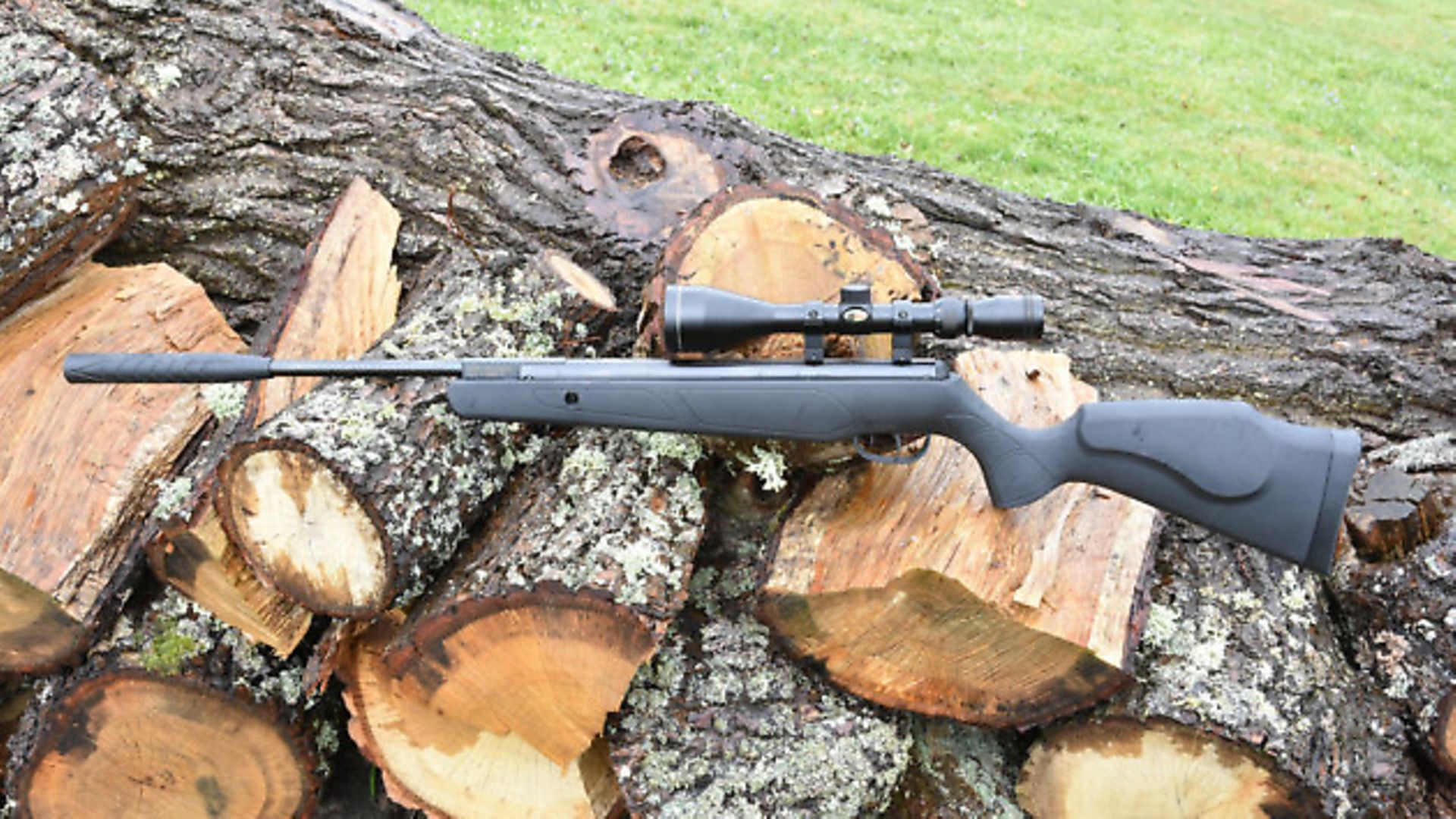 credit: Archant
credit: Archant
Master a basic recoiling gun and your PCP accuracy will improve immensely. There are plenty of inexpensive break-barrel airguns on the market, and SMK has a good reputation for offering lots of choice at very low prices. You can often get the rifle bundled with a simple scope and mounts for, quite frankly, astonishingly little money.
They also make some higher specification models that are much more substantial and are more sophisticated in their design and build, and as much as I suggest a basic gun makes a good trainer, it needs to be reasonably accurate and consistent to reward your hard work.
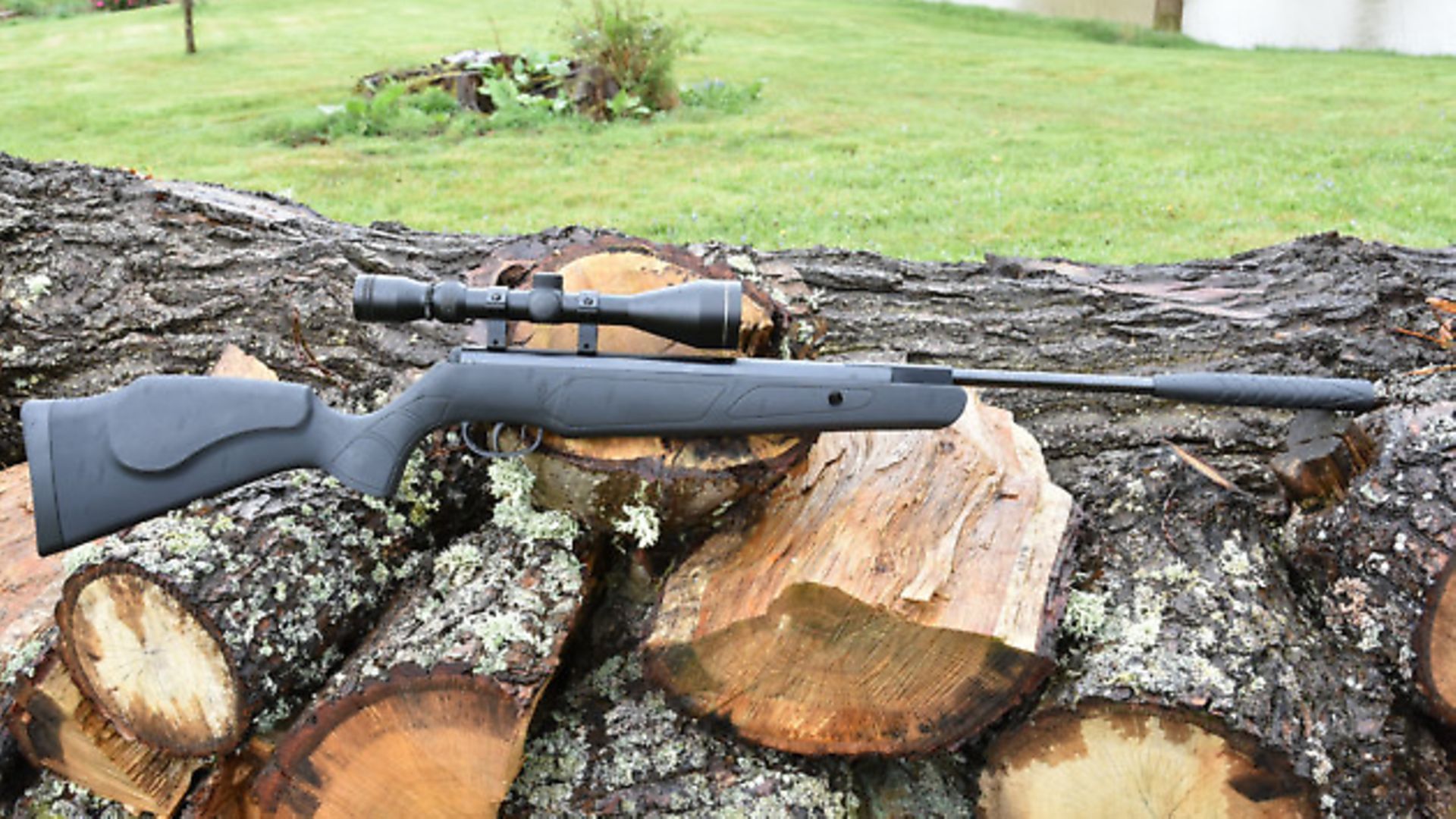 credit: Archant
credit: Archant
Keep it simple
A simple springer doesn’t need as much TLC as an exotic PCP, so can be dragged out in all weathers with only a quick wipe down with an oily rag needed before it goes back in the gun safe. It also eliminates the need to transport a pump or dive bottle to refill the rifle as the day goes on. A good, old-fashioned springer just needs you to provide the power and a pouch of pellets and you’re ready to go. Reducing hassle and transport worries also makes regular practice less of a chore and more of a pleasure.
The SMK model XS19 looked like a good choice for this article so I requested a loaner. I was sent the latest version, with a gas-ram power plant and a silencer fitted as standard, which I hoped would steady the rifle on aim a little. I also requested a 3-9 x 50 mil-dot scope and mounts to complete the set-up. This new version wears a synthetic stock which matches the silencer/cocking aid. SMK also packed some Remington Tyrant Strike Point pellets. Over the chronograph the 14.2 grain pellets averaged 490 fps for a muzzle energy of 7.57 ft.lbs. The pellets were a very tight fit in the breech perhaps slowing their velocity. The rifle was noticeably easy to cock and the firing cycle was pleasantly smooth, with no apparent vibration. It was also quiet which I imagine is a combination of the gas-ram and silencer.
 credit: Archant
credit: Archant
The trigger action was light for a rifle in this class, although typically long in its second stage. Inside the trigger guard is a manual safety, whilst inside the action there’s an anti-bear trap device that prevents the action from closing accidentally and hurting your fingers. I found the synthetic stock quite slim, despite having ambidextrous cheek pieces, and the overall dimensions fitted my average-sized frame well. Alongside the mounted in grip panels, the surface of the stock has a nice matte finish that prevents reflections and adds grip.
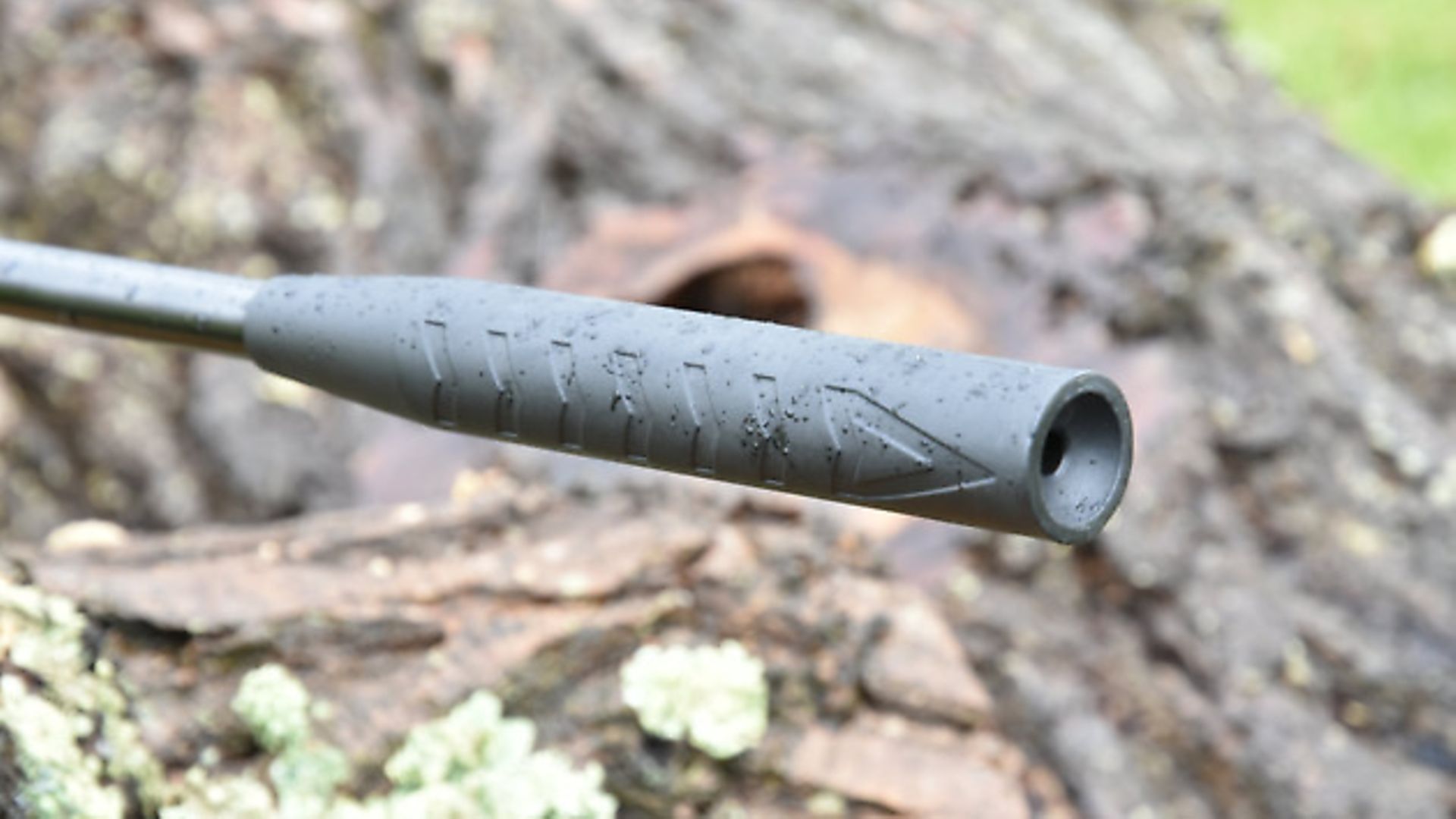 credit: Archant
credit: Archant
Pellet selection
As with all guns, it’s wise to try a selection of pellets to see which is most accurate, and my sample clearly liked the RWS Hobby wadcutter best. I was getting consistent ¾” groups at 25 yards, which is good enough for the training I was planning.I would have preferred a .177 because the pellets are cheaper, making long sessions easier on the pocket, and because I’m more familiar with its trajectory. I could always use up old part-tins of pellets for close-range stuff with a quick re-zero.
Competitive types will drone on about shooting so many shots from each of the key positions of, standing, kneeling, sitting and prone, and in the past I have done that, but to be blunt, it bored me stupid. What I’ve learned to do since then is to make each challenge as varied, and writing as a hunter, as real-world as possible. I’ll walk into a woodland and come to a halt. Looking around I’ll spot an acorn 15 yards away and try to hit it from standing. Sounds easy perhaps, but it can still be tricky.
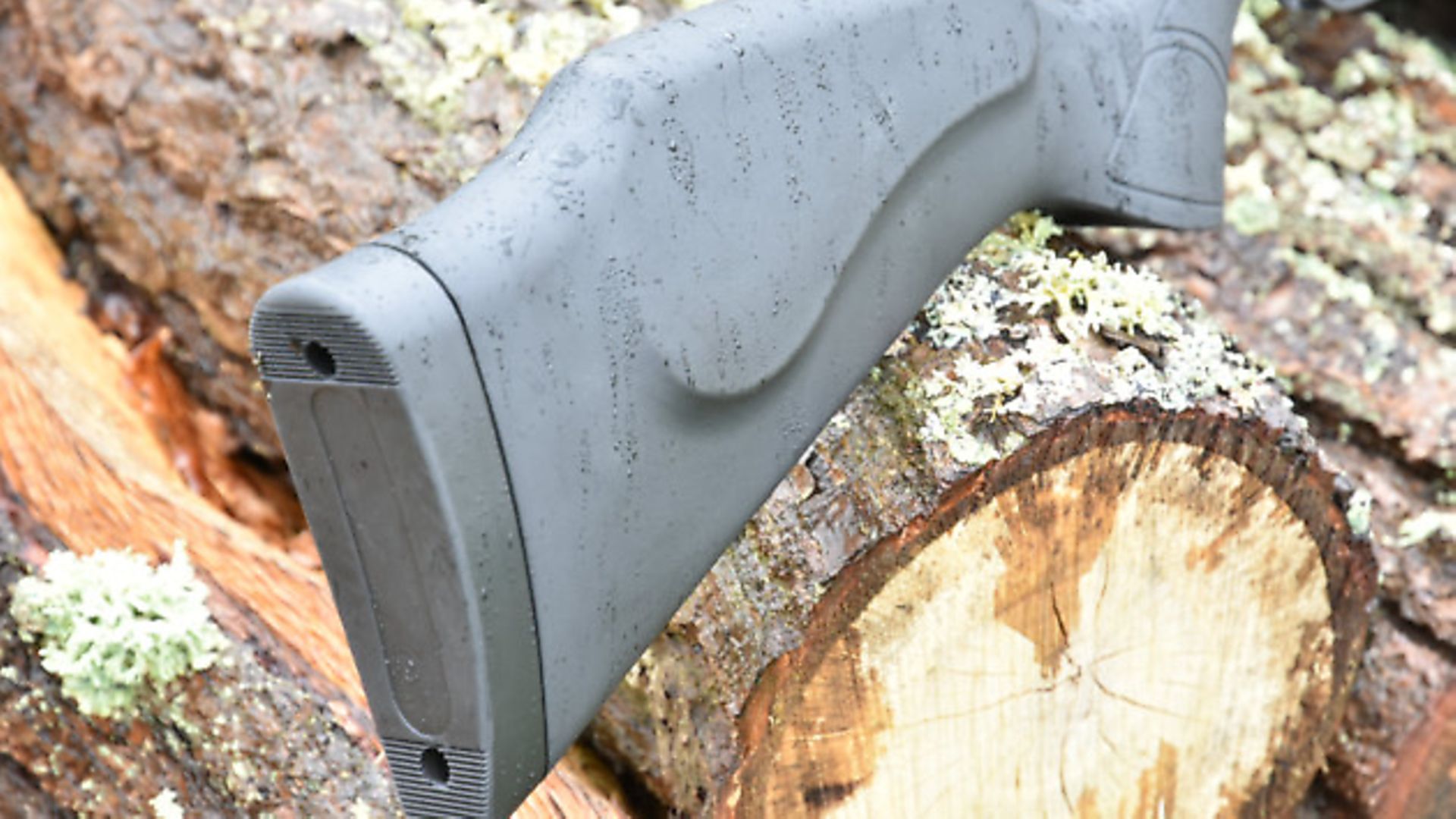 credit: Archant
credit: Archant
A core skill of successful shooting is what is comically called ‘follow-through’, which means looking intently through your scope to see the pellet strike – or miss the target. Both outcomes teach you something.
Learning this one skill alone can make a huge difference to your accuracy and kill rate. A common mistake is to lift your head quickly after the shot is released to see what happened. It’s a bad mistake because it can destabilise your hold and wreck good technique. You’ll also have a better view through the scope and see more accurately where the pellet went.
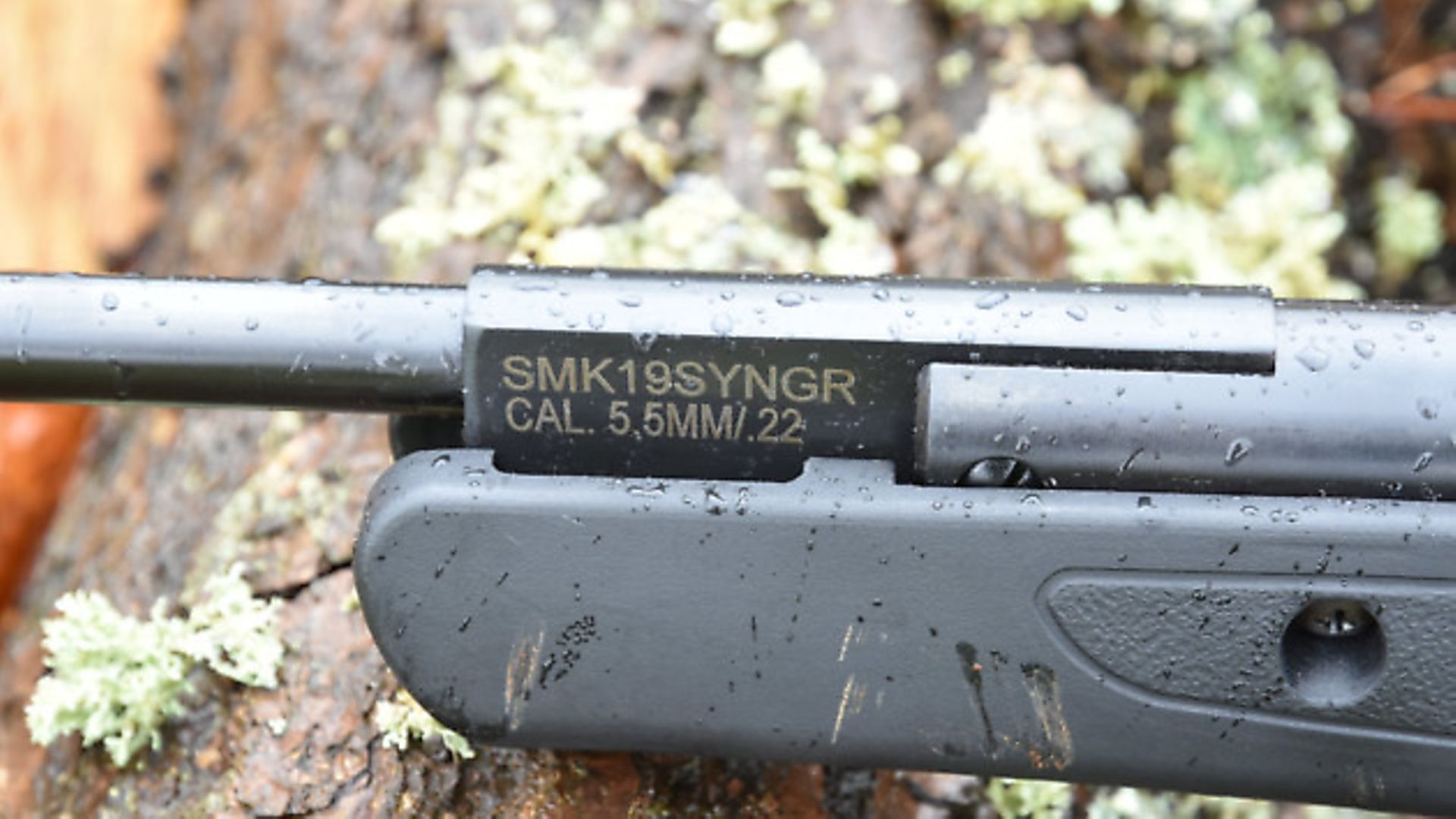 credit: Archant
credit: Archant
Mix it up
Walking on a few steps more, I might notice a large, dead leaf on a bank 20 yards away, so I’ll drop into the kneeling position and take a shot. Becoming more comfortable getting into and relaxing in each position is good training for your muscles. By making each shot different to the last, you build your skill and also your range of memories about how to make each shot work. If I miss, I’ll take a few more shots to see if I can understand what I was doing wrong. If I’m really stuck, I’ll set out a paper target held in a tiny stand that folds up to go into my bag. Paper targets will always show you the real truth of what is happening and are a vital training tool.
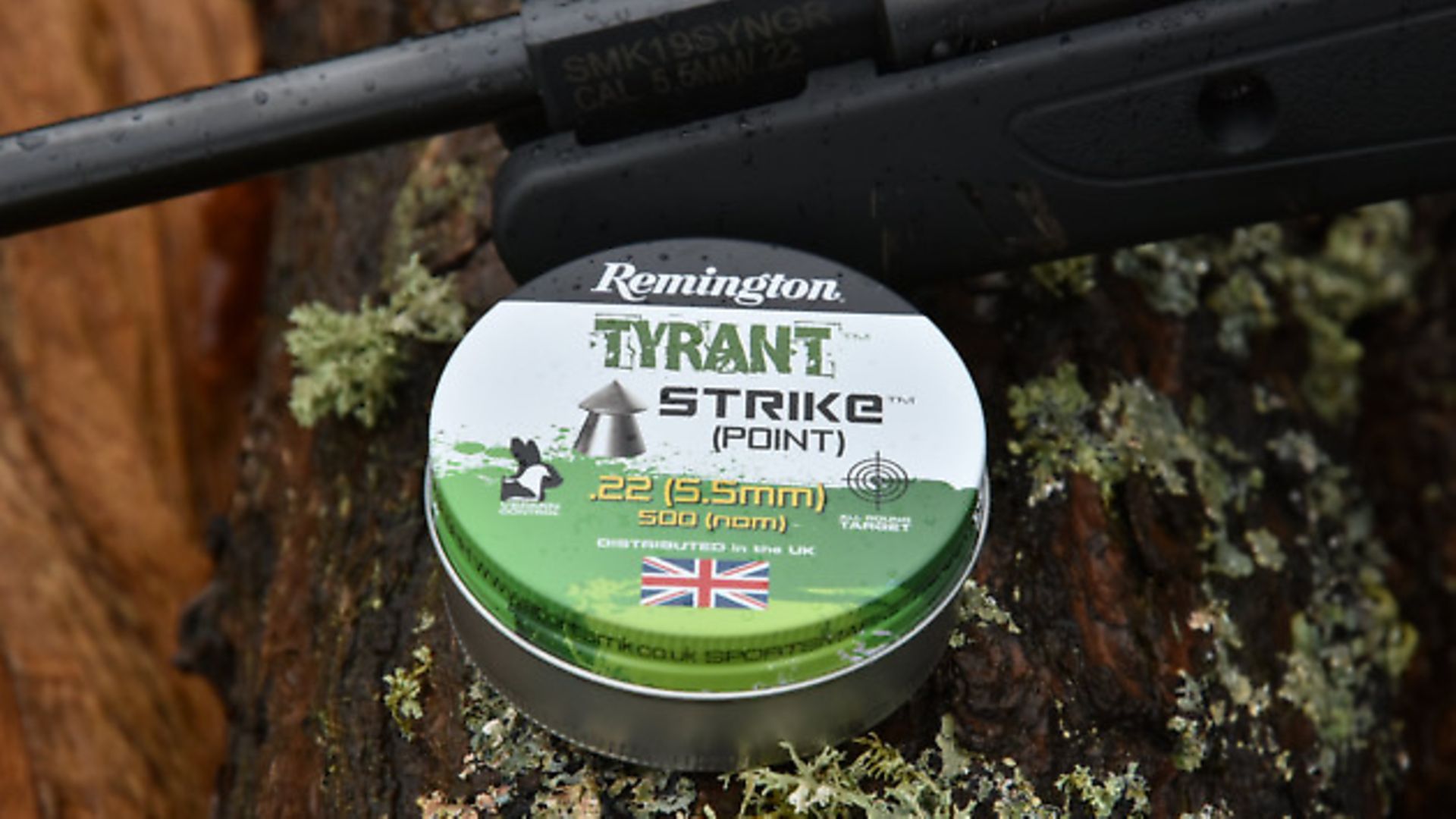 credit: Archant
credit: Archant
However, only training on them can become dull and a little soul destroying. I like to carry along some reactive targets, often a packet of Extra Strong Mints, which explode in a satisfying way when you hit them squarely. The remaining bits are biodegradable so cause no harm to the countryside, and will improve the badgers’ breath.
Make every training session different and remember to do the most work on the shots you find hardest. If you’re completely reliable from sitting, take more practice shots standing, thereby strengthening your greatest weakness, so that when a shot is presented that you can only take off hand, you’ll be much more ready.
 credit: Archant
credit: Archant
The XS19 gas-ram seemed smoother and had less vibration than the spring-powered version I’d tried before, and is therefore a step up.
The cocking action is reasonably smooth and certainly light, making long sessions less tiring. A gun like this could really improve your accuracy as long as you put the time in. Keep it fun and I promise you’ll improve.
Specifications:
Manufacturer - SMK
Web - www.sportsmk.co.uk
Tel - 01206 795 333
Model - XS19SYNGR
Type - Break-barrel
Length - 108cm
Weight - 3.1kg
Trigger - Two-stage
RRP - £219.95
Pellets - £5.49
Scope - £79.95
Mounts - £8.95